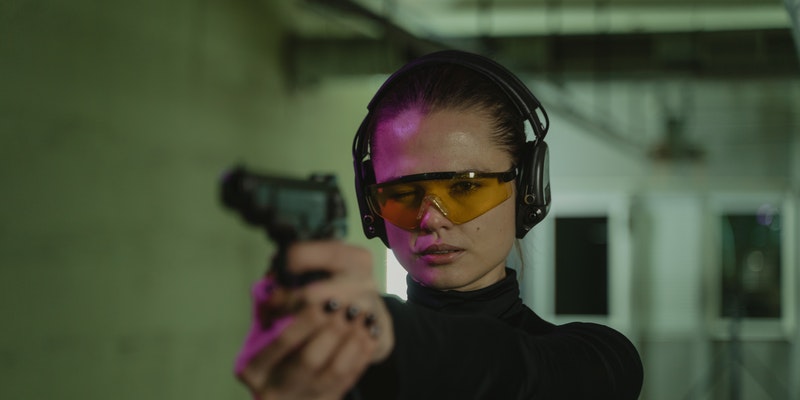
Photo from Pexels
Most gun owners want to use their guns safely. But just because a person wants to be a safe gun owner and wants to be responsible does not guarantee that they automatically will be.
The Difference between Wanting to Be a Safe Gun User and Being a Safe Gun User
Several people have owned guns for decades and still fail to follow some of the basic rules for gun safety. Failing to follow gun safety rules can lead to people getting hurt or losing their lives.
There are gun safety rules that can help keep you safe. However, just memorizing these rules is not enough. You need to show that you can follow these rules. Firearm safety rules prevent accidents. When people are unmotivated to memorize these rules or think that the rules don’t apply to them, they get hurt.
Seven Basic Firearm Safety Rules
1. You should keep your firearm pointed in a safe direction. It should usually be pointed down. When pointing your firearm, you must think beyond what you can see. For example, if you have your firearm pointing down but are standing on the second level of a wood house, you have the potential of injuring people below you if it discharges.
2. Keep your finger off the trigger unless you are going to shoot. This should be a no-brainer, but people will walk around with their finger on the trigger by habit or imitating what they see on TV. They may not realize how easy it is for their finger to pull back and discharge the gun, hurting others.
3. Keep your firearm unloaded until you are going to use it. This means that you would not want to store a loaded gun. Anyone could grab your loaded gun thinking that it was not loaded and accidentally fire it. Or you could mistakenly think that your gun is not loaded and end up injuring yourself or others.
4. Store your gun in a safe location. This means storing your gun away from where children and others can access it. It is best if it is stored in a locked case. Many opt to keep their firearms and their ammunition in separate places.
5. Always assume that your firearm is loaded. Even though you take steps to unload your gun before you store it, you must think that it is loaded every time you have a gun in your hand. If everyone had followed this simple rule, countless injuries and fatalities could have been avoided.
6. Safety checking your firearm is a must before you use it, while you are using it, and after its use.
7. Always know what is beyond the target you are shooting at. This goes back to rule number one. If you are shooting at a target, you have to remember that your bullets will likely travel through that target, hitting what is behind it.
Work with Experienced Gun Owners
Just reading gun safety rules is not enough. You need to learn about guns for beginners from experts. This includes knowing how to operate pistols and revolvers and performing essential maintenance and troubleshooting.
When you see people handling guns on television, they often have a single handgrip or have their gun cocked to the side. However, when you work with a professional, you will learn the value of the proper two-handed grip and the correct shooting position.
In addition to learning how to use a gun safely, you will learn how to fire it accurately. Working with professionals can teach you the proper sight alignment and the appropriate sight picture. You will also learn the benefits of shooting with both eyes open instead of shooting with just one eye open, which is commonly displayed on TV and in movies.
Finally, if you have children in your home, professionals can teach you and your children how to be safe when around guns. Few situations are as sad as a child accidentally injuring themselves or others with a firearm.
Conclusion
As a gun owner, you need to know the foundational safety skills for operating and storing a firearm. You owe it to yourself and those around you to learn the basic principles of operating a gun safely.

